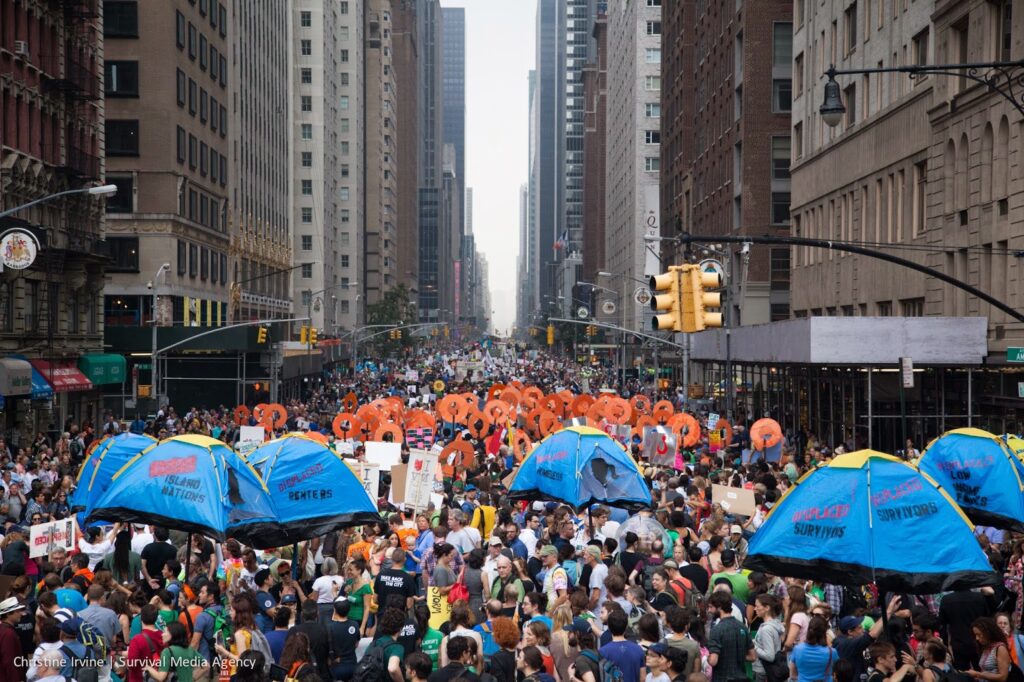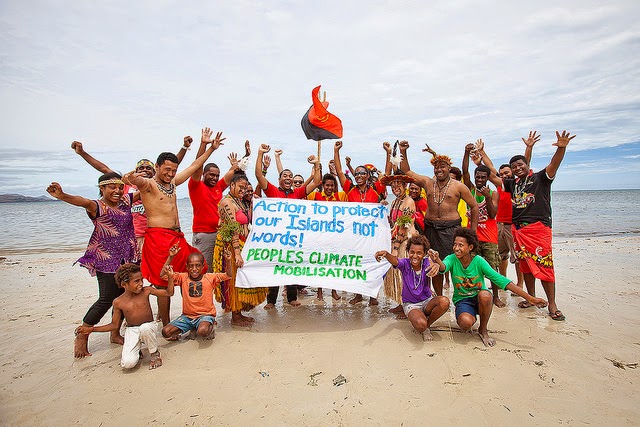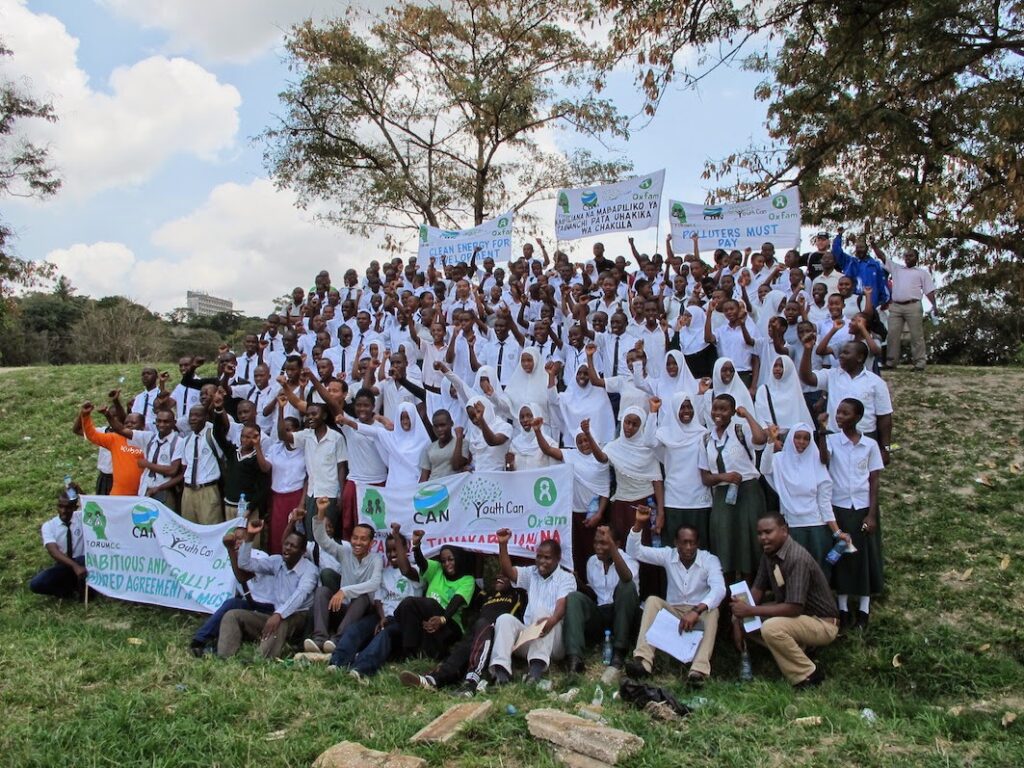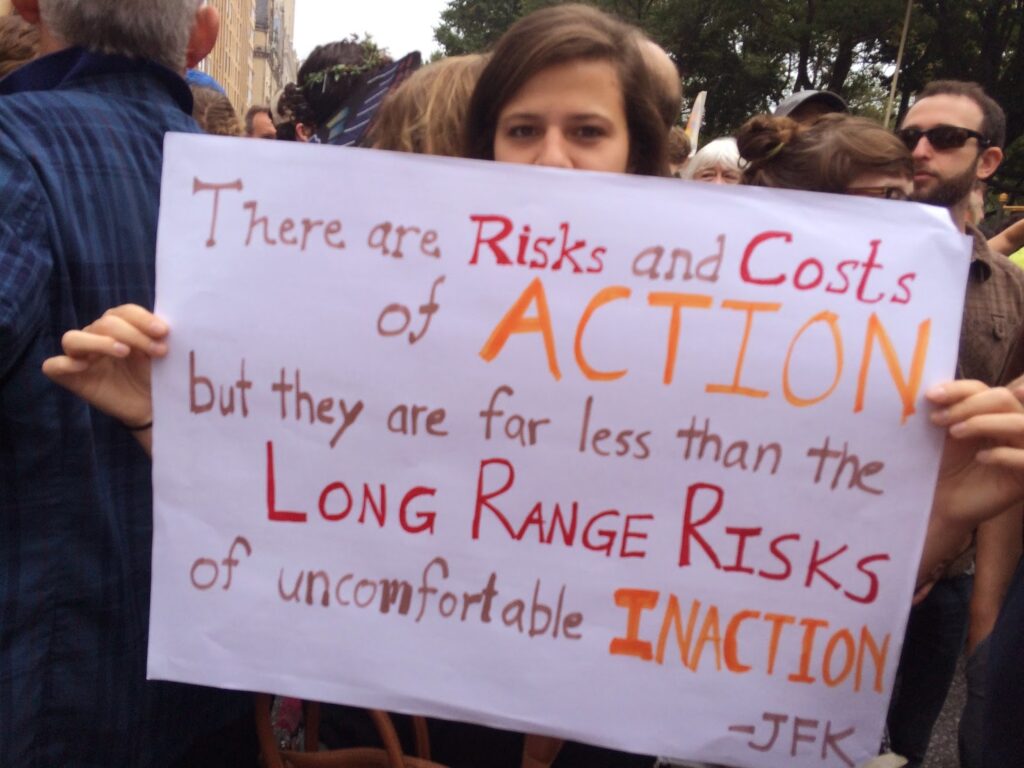
People’s Climate March: A march to show the nations of the world, and particularly their leaders, that people care about climate change.
Despite the fact that I come from a country where demonstrations happen every week (for good and for bad) – or maybe because of that – my first thought was: “What in the world is going to change for politicians when a bunch of people take to the streets on a Sunday morning for an hour and a half?” And yet, I found this initiative pretty exciting. I had already planned to go to New York City (NYC) as SWITCH–our energy-mix modeling tool under development in the Renewable and Appropriate Energy Laboratory (RAEL) at UC Berkeley–had been selected by the United Nations Big Data Climate Challenge as a “Project to Watch.” So, I decided to arrive ahead of time in order to take part in the march. The day before, I contacted my friend, Olivia, who lives in Manhattan, to see if she would be interested in going, too. I was pleasantly surprised to hear that she would join with colleagues from her consulting firm; none of them working even remotely on a topic related to climate change.

We did not have a single idea of how big – or small – this event would be when, on Sunday morning, we left home to meet up at the corner of 72nd and Central Park West to join Group #2: “We can build the future,” the march’s section that would gather, among others, students and youth. You gain a sense of the magnitude of a public event just by using public transportation a few minutes before it starts. In the subway station, the trains were so packed that I had to let two pass before finally being able to get in, my nose pressed against a wall, ultimately looking at a poster advertising the best dermatology center in town with “APPROVED” clipart red stamps everywhere on it, including one on the face of the dermatologist himself. But what I could hear was amazing: Everywhere in the subway people were discussing climate change, its causes and consequences, and what could be done to mitigate it. When we finally reached the meeting point, thoughtful signs, green costumes and smiling people got out of the train and the subway stayed empty behind us. The group I was joining was positioned second in the march, and yet there were so many people ahead of me that I could not see the rally’s front edge.

The People’s Climate March (PCM) was divided into six groups. The first one was devoted to people in frontline of the crisis, those most impacted by climate change. Labor, families, businesses, social justice and environmental organizations, climate-related activists and scientists were following. Officials and movie stars such as Mayor de Blasio, UN Secretary-General Ban Ki-moon, Leonardo Dicaprio, Al Gore, Mark Ruffalo, and Evangeline Lilly were there, too. Finally, the last group at the end of the march was named: “To change everything, we need everyone,” to remind people that one does not have to fit in any category to care about the climate, because climate change does not care about how we define ourselves, and only a common endeavor can overcome it. Indeed, everyone took part in this initiative. I saw children, the elderly, students, businessmen. I heard many different languages. I read so many different messages – concerns or solutions – on signs, and yet everybody had the same motivation: Make their voice heard by the 125 heads of state that would attend the climate summit the days following at the United Nations headquarters, a few miles from where we were standing.

Despite some hitches – the march’s pace was so slow that after the first hour we only travelled one block, and the back end of the march was asked by text messaging to disperse before the official end point. This successful event gathered 400,000 people, becoming the largest climate rally in history. Aside from this, about 2,700 simultaneous climate events took place in 160 countries, involving half a million people. As far as the Bay Area is concerned, several thousand people marched around Lake Merritt in Oakland on Sunday to share about the climate crisis.

After the march, General-Secretary Ban Ki-moon said what we were all thinking:
“I am overwhelmed by such a strong power, energy and voice of people – I hope this voice will be truly reflected to the leaders when they meet on September 23rd. Climate change is [a] defining issue of our time and there is no time to lose.”
Indeed, our voice was heard as shown by the number of times the climate rally was referenced during the UN summit on Tuesday. More than 70 countries and 1,000 companies endorsed the development of mechanisms that would reflect the true costs of emissions. Financial institutions, commercial and national banks, insurance companies and pension funds announced their intent to mobilize more than $200 billion for climate action by the end of 2015.
However, the main challenge still remains: No large agreement on tangible emission reduction targets has been signed since the Kyoto protocol, and presidents from several countries did not attend the summit.
Now that people from many places in the world have officially demanded action about the climate crisis, it is time for the United Nations to encourage the development of a neutrally-governed framework for international cooperation beyond any geopolitical split, and for politicians from all countries to wholeheartedly engage in the fight against climate change – no matter how important the needed financial concessions are, because they will never be as high as the cost of a no-action scenario. The ultimate goal is the setting up of an international treaty to reduce global greenhouse gas emissions that must be successfully ratified during COP21 in Paris in 2015… our last chance.

Header image: PCM in New York City (peoplesclimate.org)